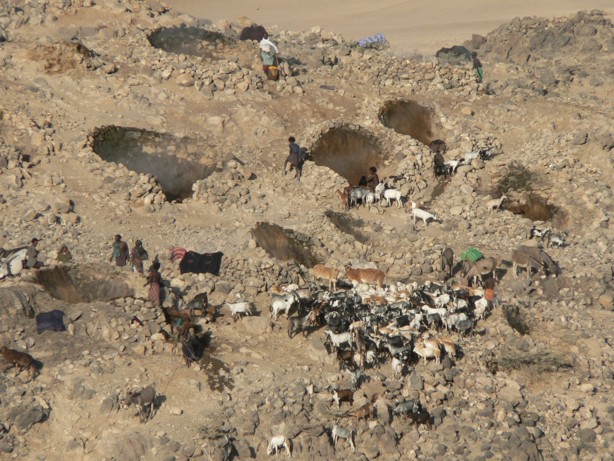
Local people collecting water from 'Boinas', west of Gabho. These devices condense geothermal steam and provide sufficient water for drinking, washing, cleaning and watering animals. 'Boina' means 'white smoke' but actually refers to steam. Photograph by Tim Wright, University of Leeds.
About the Afar Region
The Afar region covers the northeastern part of Ethiopia. The Afar depression, also known as the Danakil depression, forms the northern part of the region and is largely desert scrubland with shallow salty lakes and long chains of volcanoes. The Awash River valley forms the southern part of the area with the river itself flowing into the northern lakes rather than to the sea.
Much of Afar is below sea level (Lake Asal is -155 metres) and it is one of the hottest places on Earth with temperatures topping 50 degrees centigrade in summer.
The majority of Afar people live in the Afar region of Ethiopia, although there are significant minorities in neighbouring Eritrea and Djibouti. The population is largely rural and pastoralist. Afar is the principal language of the region and Islam (Sunni) the principle religion.
The region is well known for its early hominid fossil finds including 'Lucy', an Australopithecus afarensis, discovered in 1974, who lived about 3.2 million years ago and more recently in the summer of 2007 the discovery of hominid remains 3.5 - 3.8 million years old.
